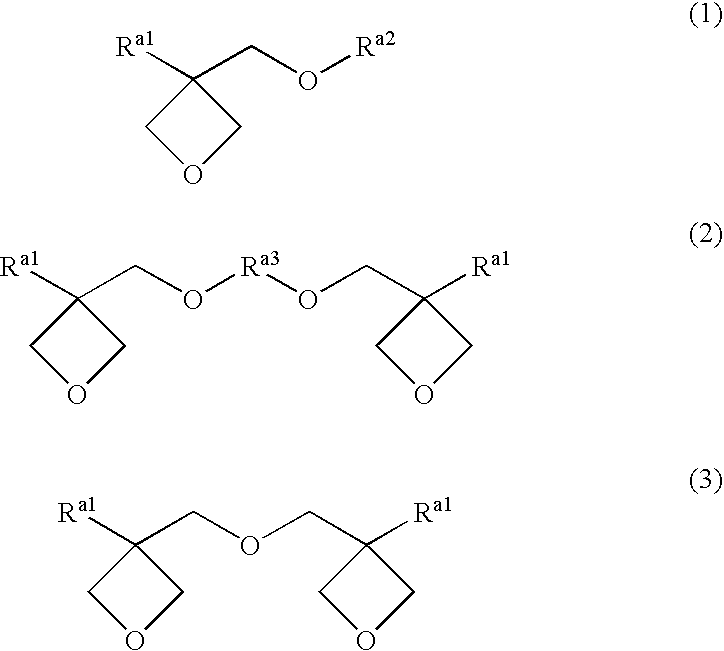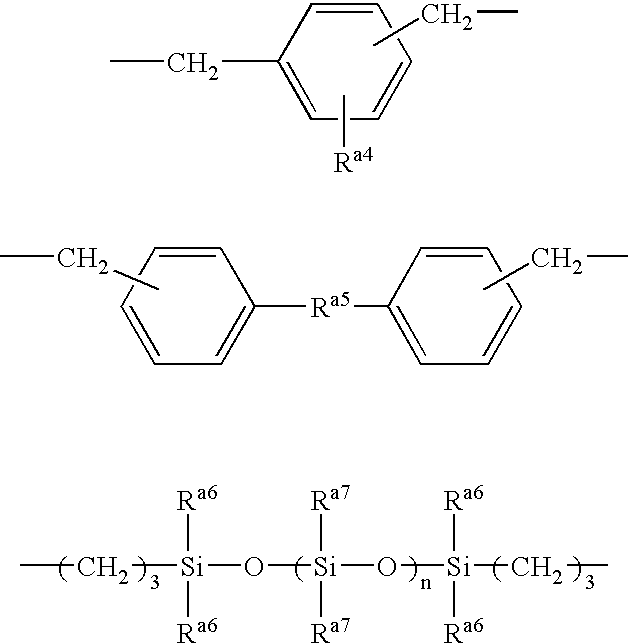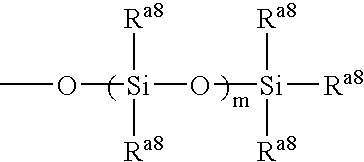Ink composition, inkjet recording method, printed material, process for producing lithographic plate, and lithographic printing plate
a technology of inkjet recording and composition, which is applied in the direction of inks, printing, instruments, etc., can solve the problems of waste material generation, high production cost, and high running cost, and achieve the effects of low production cost, low cost and low production cos
- Summary
- Abstract
- Description
- Claims
- Application Information
AI Technical Summary
Benefits of technology
Problems solved by technology
Method used
Image
Examples
example 1
Preparation of Pigment Dispersions
[0295] Yellow, magenta, cyan, and black pigment dispersions 1 were prepared in accordance with the method described below. Dispersion conditions were appropriately adjusted using a known dispersing machine so that the average particle size of pigment particles was in the range of 0.2 to 0.3 μm, and they were subsequently filtered using a filter while heating.
[0296] Yellow Pigment Dispersion 1
CI Pigment Yellow 1320 parts by weightPolymeric dispersant (Solsperse series20 parts by weightmanufactured by Avecia)Diethylene glycol divinyl ether (manufactured60 parts by weightby BASF)
[0297] Magenta Pigment Dispersion 1
CI Pigment Red 57:120 parts by weightPolymeric dispersant (Solsperse series20 parts by weightmanufactured by Avecia)Diethylene glycol divinyl ether (manufactured60 parts by weightby BASF)
[0298] Cyan Pigment Dispersion 1
CI Pigment Blue 15:320 parts by weightPolymeric dispersant (Solsperse series20 parts by weightmanufactured by Avecia)Die...
examples 2 to 13
Preparation of Inks
[0308] Magenta inks 2 to 13 were prepared in accordance with the methods below.
Magenta Ink 2
[0309] Magenta ink 2 was prepared in the same manner as for Magenta ink 1 except that IRGACURE 784 was used as the polymerization initiator 1. The halogen ion (chloride ion) content of the ink thus prepared (measured by atomic absorptiometry) was no greater than 100 ppm.
Magenta Ink 3
[0310] Magenta ink 3 was prepared in the same manner as for Magenta ink 1 except that polymerization initiator A below was used as the polymerization initiator 1. The halogen ion (chloride ion) content of the ink thus prepared (measured by atomic absorptiometry) was no greater than 100 ppm.
Magenta Ink 4
[0311] Magenta ink 4 was prepared in the same manner as for Magenta ink 1 except that LD-5 below and mercaptobenzotriazole were used as the polymerization initiators 1 and 2. The halogen ion (chloride ion) content of the ink thus prepared (measured by atomic absorptiometry) was no gre...
example 12
[0320] Magenta ink 12 was prepared in the same manner as for Magenta ink 1 except that Compound M-1 below (oxidation potential+1.40 V) was used as an oil-soluble dye instead of CI Pigment Red 57:1. The halogen ion (chloride ion) content of the ink thus prepared (measured by atomic absorptiometry) was no greater than 100 ppm.
[0321] Magenta ink 13 was prepared in the same manner as for Magenta ink 1 except that Compound M-2 below (oxidation potential+0.70 V) was used as an oil-soluble dye instead of CI Pigment Red 57:1. The halogen ion (chloride ion) content of the ink thus prepared (measured by atomic absorptiometry) was no greater than 100 ppm.
PUM
| Property | Measurement | Unit |
|---|---|---|
| peak light emission wavelength | aaaaa | aaaaa |
| mass | aaaaa | aaaaa |
| mass | aaaaa | aaaaa |
Abstract
Description
Claims
Application Information
 Login to View More
Login to View More - R&D
- Intellectual Property
- Life Sciences
- Materials
- Tech Scout
- Unparalleled Data Quality
- Higher Quality Content
- 60% Fewer Hallucinations
Browse by: Latest US Patents, China's latest patents, Technical Efficacy Thesaurus, Application Domain, Technology Topic, Popular Technical Reports.
© 2025 PatSnap. All rights reserved.Legal|Privacy policy|Modern Slavery Act Transparency Statement|Sitemap|About US| Contact US: help@patsnap.com



